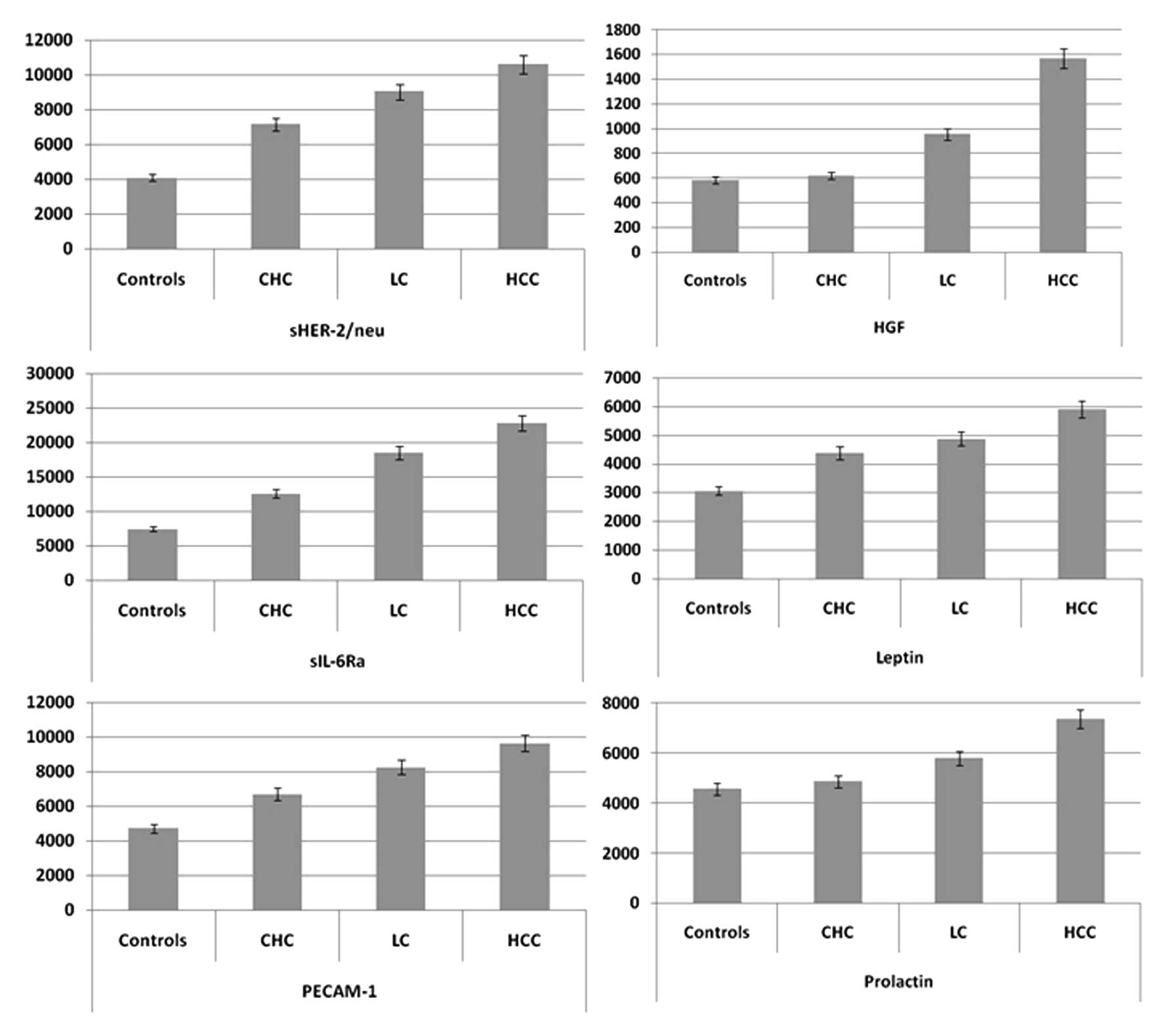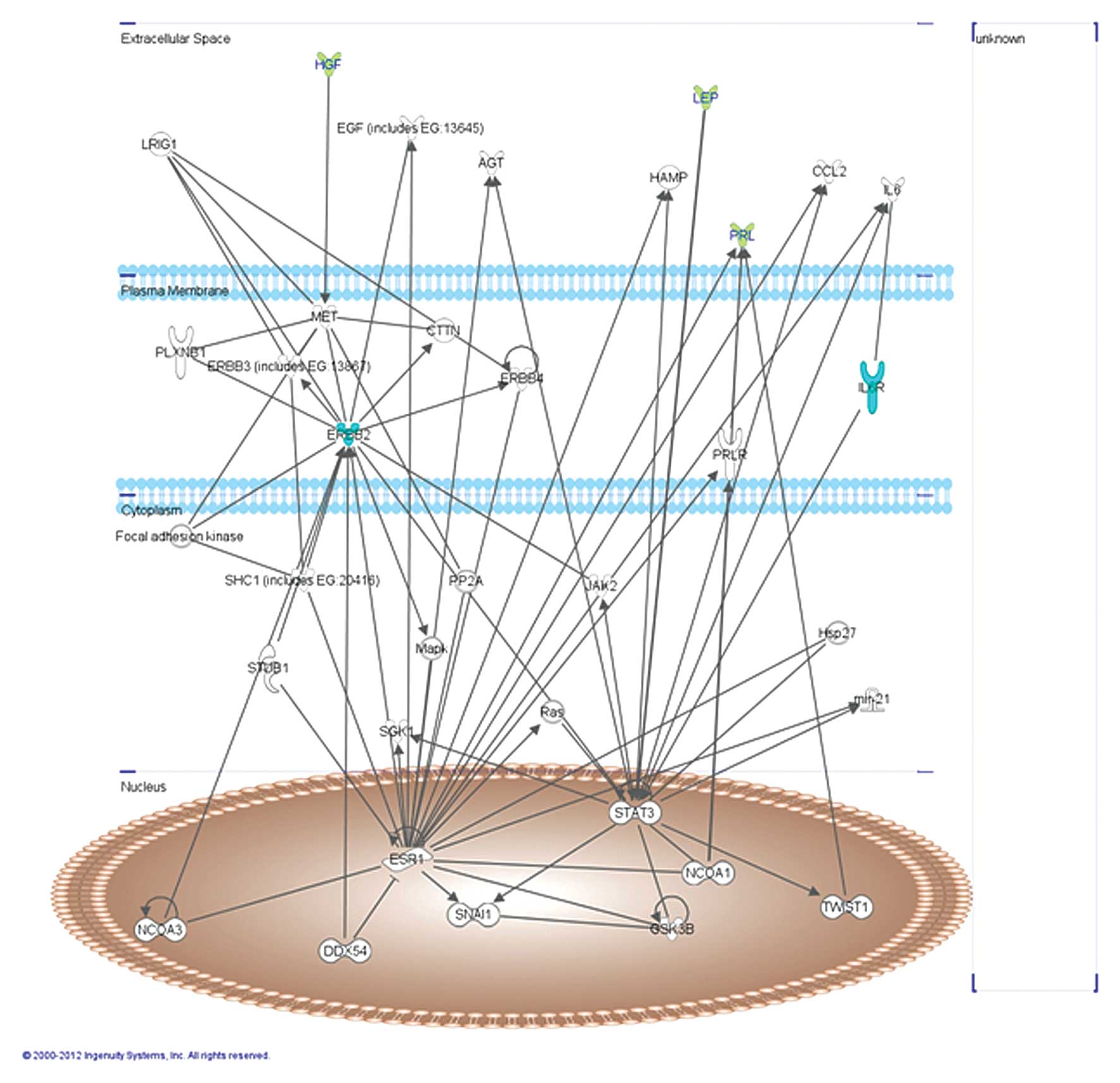|
1
|
Fusco M, Girardi E, Piselli P, Palombino
R, Polesel J, Maione C, Scognamiglio P, Pisanti FA, Solmone M, Di
Cicco P, Ippolito G, Franceschi S and Serraino D: Epidemiology of
viral hepatitis infections in an area of southern Italy with high
incidence rates of liver cancer. Eur J Cancer. 44:847–853. 2008.
View Article : Google Scholar : PubMed/NCBI
|
|
2
|
El-Serag HB and Rudolph KL: Hepatocellular
carcinoma: epidemiology and molecular carcinogenesis.
Gastroenterology. 132:2557–2576. 2007. View Article : Google Scholar : PubMed/NCBI
|
|
3
|
Castello G, Scala S, Palmieri G, Curley SA
and Izzo F: HCV-related hepatocellular carcinoma: From chronic
inflammation to cancer. Clin Immunol. 134:237–250. 2010. View Article : Google Scholar : PubMed/NCBI
|
|
4
|
Ueno Y, Sollano JD and Farrell GC:
Prevention of hepatocellular carcinoma complicating chronic
hepatitis C. J Gastroenterol Hepatol. 24:531–536. 2009. View Article : Google Scholar : PubMed/NCBI
|
|
5
|
Behne T and Copur MS: Biomarkers for
hepatocellular carcinoma. Int J Hepatol. 2012:8590762012.
View Article : Google Scholar : PubMed/NCBI
|
|
6
|
Forner A, Vilana R, Ayuso C, Bianchi L,
Solé M, Ayuso JR, Boix L, Sala M, Varela M, Llovet JM, Brú C and
Bruix J: Diagnosis of hepatic nodules 20 mm or smaller in
cirrhosis: prospective validation of the noninvasive diagnostic
criteria for hepatocellular carcinoma. Hepatology. 47:97–104. 2008.
View Article : Google Scholar
|
|
7
|
Carmeliet P: Angiogenesis in health and
disease. Nat Med. 9:653–660. 2003. View Article : Google Scholar : PubMed/NCBI
|
|
8
|
Semela D and Dufour JF: Angiogenesis and
hepatocellular carcinoma. J Hepatol. 41:864–880. 2004. View Article : Google Scholar : PubMed/NCBI
|
|
9
|
Zhang JK, Pan PL, Wu YM, Xiao JJ and Peng
JW: Expression of HER-2/neu oncogene in hepatocellular carcinoma
and the clinical implications. Nan Fang Yi Ke Da Xue Xue Bao.
30:326–328. 2010.(In Chinese).
|
|
10
|
Li D, Chiu H, Gupta V and Chan DW:
Validation of a multiplex immunoassay for serum angiogenic factors
as biomarkers for aggressive prostate cancer. Clin Chim Acta.
413:1506–1511. 2012. View Article : Google Scholar : PubMed/NCBI
|
|
11
|
Capone F, Costantini S, Guerriero E,
Calemma R, Napolitano M, Scala S, Izzo F and Castello G: Serum
cytokine levels in patients with hepatocellular carcinoma. Eur
Cytokine Netw. 21:99–104. 2010.PubMed/NCBI
|
|
12
|
Costantini S, Capone F, Guerriero E, Maio
P, Colonna G and Castello G: Serum cytokine levels as putative
prognostic markers in the progression of chronic HCV hepatitis
leading to cirrhosis. Eur Cytokine Netw. 21:251–256.
2010.PubMed/NCBI
|
|
13
|
Costantini S, Capone F, Guerriero E,
Marfella R, Sorice A, Maio P, Di Stasio M, Paolisso G, Castello G
and Colonna G: Cytokinome profile of patients with type 2 diabetes
and/or chronic hepatitis C infection. PLoS One. 7:e394862012.
View Article : Google Scholar : PubMed/NCBI
|
|
14
|
Bacaksiz A, Sahin FI, Bilezikci B and
Yilmaz Z: Determination of HER-2/Neu status in hepatocellular
carcinoma cases. Genet Test. 12:211–214. 2008. View Article : Google Scholar : PubMed/NCBI
|
|
15
|
Rose-John S: Interleukin-6 biology is
coordinated by membrane bound and soluble receptors. Acta Biochim
Pol. 50:603–611. 2003.PubMed/NCBI
|
|
16
|
Rose-John S and Heinrich PC: Soluble
receptors for cytokines and growth factors: generation and
biological function. Biochem J. 300:281–290. 1994.PubMed/NCBI
|
|
17
|
Montero-Julian FA: The soluble IL-6
receptors: serum levels and biological function. Cell Mol Biol.
47:583–597. 2001.PubMed/NCBI
|
|
18
|
Migita K, Abiru S, Maeda Y, Daikoku M,
Ohata K, Nakamura M, Komori A, Yano K, Yatsuhashi H, Eguchi K and
Ishibashi H: Serum levels of interleukin-6 and its soluble
receptors in patients with hepatitis C virus infection. Hum
Immunol. 67:27–32. 2006. View Article : Google Scholar : PubMed/NCBI
|
|
19
|
Maione D, Di Carlo E, Li W, Musiani P,
Modesti A, Peters M, Rose-John S, Della Rocca C, Tripodi M, Lazzaro
D, Taub R, Savino R and Ciliberto G: Coexpression of IL-6 and
soluble IL-6R causes nodular regenerative hyperplasia and adenomas
of the liver. EMBO J. 17:5588–5597. 1998. View Article : Google Scholar : PubMed/NCBI
|
|
20
|
Balci H, Akgun-Dar K, Gazioglu N, Kapucu
A, Bolayirli M and Oz B: The relationship between prolactin (PRL),
leptin, nitric oxide (NO), and cytokines in patients with
hyperprolactinemia. Pituitary. 12:170–176. 2009. View Article : Google Scholar : PubMed/NCBI
|
|
21
|
Reeves HL and Friedman SL: Activation of
hepatic stellate cells - a key issue in liver fibrosis. Front
Biosci. 7:d808–d826. 2002. View
Article : Google Scholar : PubMed/NCBI
|
|
22
|
Otte C, Otte JM, Strodthoff D, Bornstein
SR, Fölsch UR, Mönig H and Kloehn S: Expression of leptin and
leptin receptor during the development of liver fibrosis and
cirrhosis. Exp Clin Endocrinol Diabetes. 112:10–17. 2004.
View Article : Google Scholar : PubMed/NCBI
|
|
23
|
Katz SC, Pillarisetty VG, Bleier JI, Shah
AB and DeMatteo RP: Liver sinusoidal endothelial cells are
insufficient to activate T cells. J Immunol. 173:230–235. 2004.
View Article : Google Scholar : PubMed/NCBI
|
|
24
|
Newman PJ and Newman DK: Signal
transduction pathways mediated by PECAM-1. New roles for an old
molecule in platelet and vascular biology. Arterioscler Thromb Vasc
Biol. 23:953–964. 2003. View Article : Google Scholar : PubMed/NCBI
|
|
25
|
Kukla M, Zwirska-Korczala K, Gabriel A,
Janczewska-Kazek E, Berdowska A, Wiczkowski A, Rybus-Kalinowska B,
Kalinowski M, Ziolkowski A, Wozniak-Grygiel E, Waluga M and Nowak
B: sPECAM-1 and sVCAM-1: role in pathogenesis and diagnosis of
chronic hepatitis C and association with response to antiviral
therapy. Therap Adv Gastroenterol. 2:79–90. 2009. View Article : Google Scholar : PubMed/NCBI
|
|
26
|
Kollerová J, Koller T and Payer J:
Endocrine changes in liver disease. Vnitr Lek. 58:24–30. 2012.(In
Slovak).
|
|
27
|
Simon-Holtorf J, Mönig H, Klomp HJ,
Reinecke-Lüthge A, Fölsch UR and Kloehn S: Expression and
distribution of prolactin receptor in normal, fibrotic, and
cirrhotic human liver. Exp Clin Endocrinol Diabetes. 114:584–589.
2006. View Article : Google Scholar : PubMed/NCBI
|
|
28
|
Payer J, Koller T, Baqi L and Kollerova J:
Prolactin levels in patients with cirrhosis increase with severity
of liver disease. Endocrine Abstracts. 16:P4362008.
|
|
29
|
Gentile A, Trusolino L and Comoglio PM:
The Met tyrosine kinase receptor in development and cancer. Cancer
Metastasis Rev. 27:85–94. 2008. View Article : Google Scholar : PubMed/NCBI
|
|
30
|
Sahu A: Leptin signaling in the
hypothalamus: emphasis on energy homeostasis and leptin resistance.
Front Neuroendocrinol. 24:225–253. 2003. View Article : Google Scholar : PubMed/NCBI
|
|
31
|
Heinrich PC, Behrmann I, Haan S, Hermanns
HM, Müller-Newen G and Schaper F: Principles of interleukin
(IL)-6-type cytokine signalling and its regulation. Biochem J.
15:1–20. 2003. View Article : Google Scholar : PubMed/NCBI
|
|
32
|
Pancholi S, Lykkesfeldt AE, Hilmi C,
Banerjee S, Leary A, Drury S, Johnston S, Dowsett M and Martin L-A:
ERBB2 influences the subcellular localization of the estrogen
receptor in tamoxifen-resistant MCF-7 cells leading to the
activation of AKT and RPS6KA2. Endocr Relat Cancer. 15:985–1002.
2008. View Article : Google Scholar : PubMed/NCBI
|
|
33
|
Naldini L, Vigna E, Narsimhan RP, Gaudino
G, Zarnegar R, Michalopoulos GK and Comoglio PM: Hepatocyte growth
factor (HGF) stimulates the tyrosine kinase activity of the
receptor encoded by the proto-oncogene c-MET. Oncogene. 6:501–504.
1991.PubMed/NCBI
|











